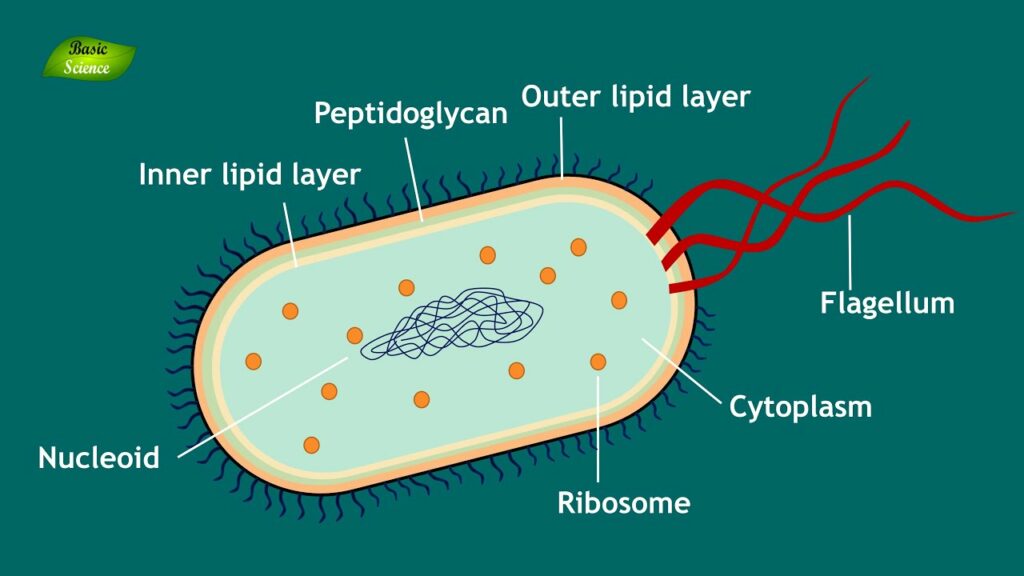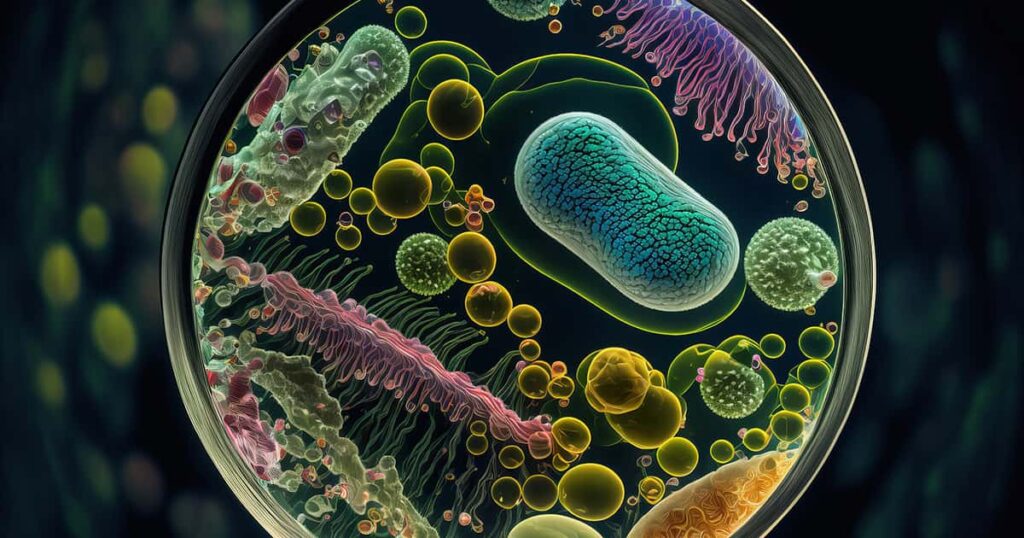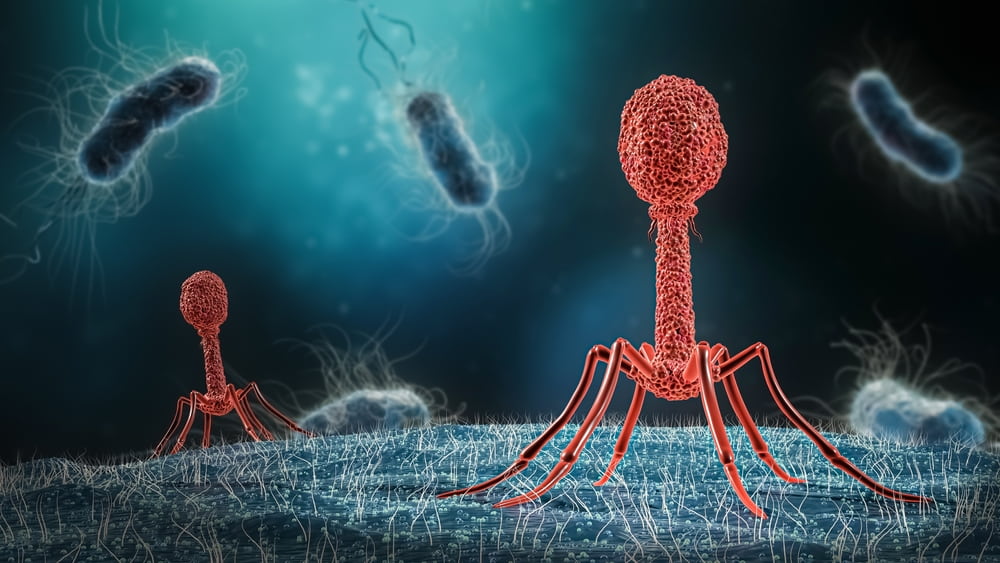Explore the significant distinctions between viruses and bacteria apex, encompassing variations in their structure, genetics, metabolism, reproduction, and additional characteristics.
Bacteria and viruses, abundant organisms on Earth, can lead to serious illnesses in the human body. Knowledge of their workings aids in disease prevention and treatment.
Despite their prevalence, these microorganisms exhibit unique biological properties, emphasizing the importance of understanding their structure, genetics, and reproduction differences for effective public health measures against microbial diseases.
Basic Biology of Viruses!
To distinguish from bacteria, let’s delve into key aspects of viral biology:
1. Definition:
Viruses are non-cellular microorganisms that require host cells for replication, leading to infection and disease. Unlike cells, viruses lack metabolism and are composed solely of genetic material enclosed by a protein shell.
2. Structure:
This basic viral structure consists of DNA or RNA genetic material enclosed by a protein coat known as a capsid. Some viruses may also possess an outer lipid envelope derived from the host cell membrane.
3. Reproduction:
Viruses reproduce by invading living cells and taking control of the host cell’s machinery. The host cell then produces additional viral components, which autonomously assemble into new viruses that eventually rupture or burst out of the cell.
Basic Biology of Bacteria!

Similarly, certain essential characteristics of bacteria encompass:
1. Definition:
Bacteria are single-celled microorganisms possessing all the structures and metabolic processes essential for life. In contrast to viruses, bacteria can thrive and reproduce autonomously without relying on a host.
2. Structure:
Bacterial cells consist of cytoplasm and genomes shielded by cell membranes and walls. They contain ribosomes and the necessary organelles for cellular metabolism.
3. Reproduction:
Bacteria reproduce through binary fission, growing to double their size before dividing into two identical daughter cells. Some bacteria exchange DNA through horizontal gene transfer.
Here are the major differences between viruses and bacteria!
| Feature | Viruses | Bacteria |
| Structure | Acellular microbes with genetic material and a protein coat (capsid) | Unicellular microorganisms with a complete structure, including cell membranes and walls |
| Reproduction | Depend on host cells for replication; new viruses assemble within host cells and then lyse them | Reproduce independently through binary fission; divide into two identical daughter cells |
| Metabolism | Lack metabolism; rely on host cells for energy production | Possess their own metabolic processes and can thrive independently |
| Genetic Material | DNA or RNA enclosed in a protein coat; some have an outer lipid envelope | DNA or RNA in the form of a chromosome protected by a cell membrane |
| Growth | Do not grow or increase in size outside host cells | Grow to double their size before dividing into two daughter cells |
| Independence | Dependent on host cells for replication and metabolism | Can thrive and reproduce independently outside of a host |
| Transfer of Genetic Material | Do not typically exchange genetic material except through host cells | Exchange DNA through horizontal gene transfer |
| Examples | Influenza virus, HIV, SARS-CoV-2 | Escherichia coli, Staphylococcus aureus |
Read: Rob Pinkston – A Complete Overview In 2024
Key Differences Between Viruses and Bacteria!
Despite both being agents of disease, viruses and bacteria exhibit significant differences:
1. Cellular Nature:
Viruses exist as acellular particles, whereas bacteria are complete, self-sufficient cells. Viruses rely on host cells for replication.
2. Metabolism:
Bacteria carry out all metabolic functions essential for energy production and molecular biosynthesis using cellular organelles. In contrast, viruses encode only a limited number of proteins and do not undergo independent metabolism.
3. Genetic Material:
Bacteria possess circular DNA enclosed in a chromosome, whereas viruses contain limited DNA or RNA instructions typically housed in a helical capsid. Viral genomes are considerably smaller than bacterial genomes.
4. Reproductive Mechanisms:
Viruses necessitate invading host cells and co-opting their machinery for replication through the self-assembly of viral components. In contrast, bacterial cells autonomously divide to generate daughter cells.
5. Response to Antibiotics:
Antibiotics designed to disrupt essential bacterial cellular processes prove ineffective against viruses due to their absence of metabolism and infrastructure. This challenge complicates the treatment of viral infections.
Diseases Caused by Viruses and Bacteria!

Both viruses and bacteria have the potential to cause mild to severe illnesses.
1. Viral Diseases:
Viruses contribute to diseases such as rabies, smallpox, hepatitis, influenza, common cold, herpes, chickenpox, HIV/AIDS, dengue, West Nile, and COVID-19.
2. Bacterial Diseases:
Bacteria lead to illnesses such as strep throat, staph infections, meningitis, tuberculosis, Lyme disease, tetanus, syphilis, cholera, and bacterial pneumonia.
Fighting Viral vs. Bacterial Infections!
Due to substantial variations between viruses and bacteria, distinct treatment approaches are necessary.
1. Antibiotics Ineffective Against Viruses
Antibiotics are effective solely against metabolically active bacterial cells, not dormant viruses. Misusing antibiotics for viral infections contributes to resistance.
2. Antiviral Medications:
Antiviral drugs are less abundant than antibiotics. They focus on pathways such as viral entry or replication, not cellular metabolism, distinguishing them from antibiotics.
3. Immune Response:
The body employs distinct immune defenses to combat viruses (antibodies, killer T-cells) and bacteria (phagocytes, IgM, complement).
4. Preventative Measures:
Practicing hygiene, disinfection, and vaccination aids in preventing both viral and bacterial infections. Nonetheless, it’s generally easier to interrupt the spread of bacteria, while many viruses can be transmitted before symptoms appear.
Current Research on Viruses and Bacteria!

Continual research aims to harness the understanding of viral and bacterial biology to advance disease-fighting efforts.
1. Phage Therapy:
Bacteriophages, viruses that target bacteria, are being explored as living antibiotics to combat drug-resistant infections.
2. CRISPR Applications:
CRISPR immune pathways in bacteria hold potential for antiviral gene editing applications against viruses such as HPV and hepatitis.
3. Microbiome Research:
Examining the symbiotic roles of bacteria contributes to understanding viral interactions within holobiotic microbiomes, impacting overall well-being.
Read: A Cuántas Onzas Equivale Una Taza – A Comprehensive Exploration
FAQs:
1. How are bacteria different from viruses’ apex?
The major distinctions lie in bacteria being complete cellular organisms capable of independent reproduction, while viruses are acellular particles relying on host cells for replication. Bacteria have cellular metabolism and complex genomes encoding all gene functions, whereas viruses have minimal genomic material focused only on hijacking host cells.
2. How does a bacteria cause disease?
Bacteria can cause disease through various mechanisms, including releasing toxins damaging host cells, invading tissues, or triggering excessive immune responses. Key bacterial disease mechanisms include toxin secretion, invasion through cell adhesion and enzymes, and inflammation caused by lipopolysaccharides in their cell walls.
3. Is a cold a virus or bacteria?
Colds are primarily caused by viruses, specifically rhinoviruses. Bacteria do not directly cause colds, but secondary bacterial infections can sometimes occur due to increased vulnerability from the viral infection. Antibiotics are ineffective against colds as they target bacteria, not viruses.
4. Can a virus turn into a bacterium?
No, viruses cannot transform into bacteria. Viruses and bacteria are distinct types of microbes with different biological properties. Bacteria are cellular organisms capable of independent reproduction, while viruses are acellular particles reliant on host cells for replication.
5. What are 2 differences between viruses and bacteria?
Two key distinctions are 1) Viruses are acellular, and bacteria are unicellular organisms. 2) Viruses replicate by hijacking host cells, while bacteria can independently reproduce through binary fission of their cellular structure.
6. What do bacteria and viruses have in common?
Bacteria and viruses are both microbes causing human diseases. They share similarities in their small size and ability to mutate quickly under natural selection pressure. However, their inherent biological properties are fundamentally different.
7. What kind of genetic material do viruses contain?
Viruses contain either DNA or RNA as their genetic material, limited to instructions for making more viruses. In contrast, bacteria have a full circular DNA chromosome encoding all their genes.
Conclusion:
Though both affect human health, viruses and bacteria differ significantly in their biological properties, including metabolic capacity, structure, and reproduction mechanisms.
Understanding these distinctions is crucial for public health initiatives focused on preventing and treating infections caused by these abundant microbes. Ongoing research endeavors to utilize insights from virology and bacteriology to combat diseases.
Read:
- Codie Sanchez Age – Discover The Life Journey In 2024
- Bruce Rivers Attorney – A Comprehensive Overview In 2024
- Yori SaneYoshi – A Complete Overview In 2024
